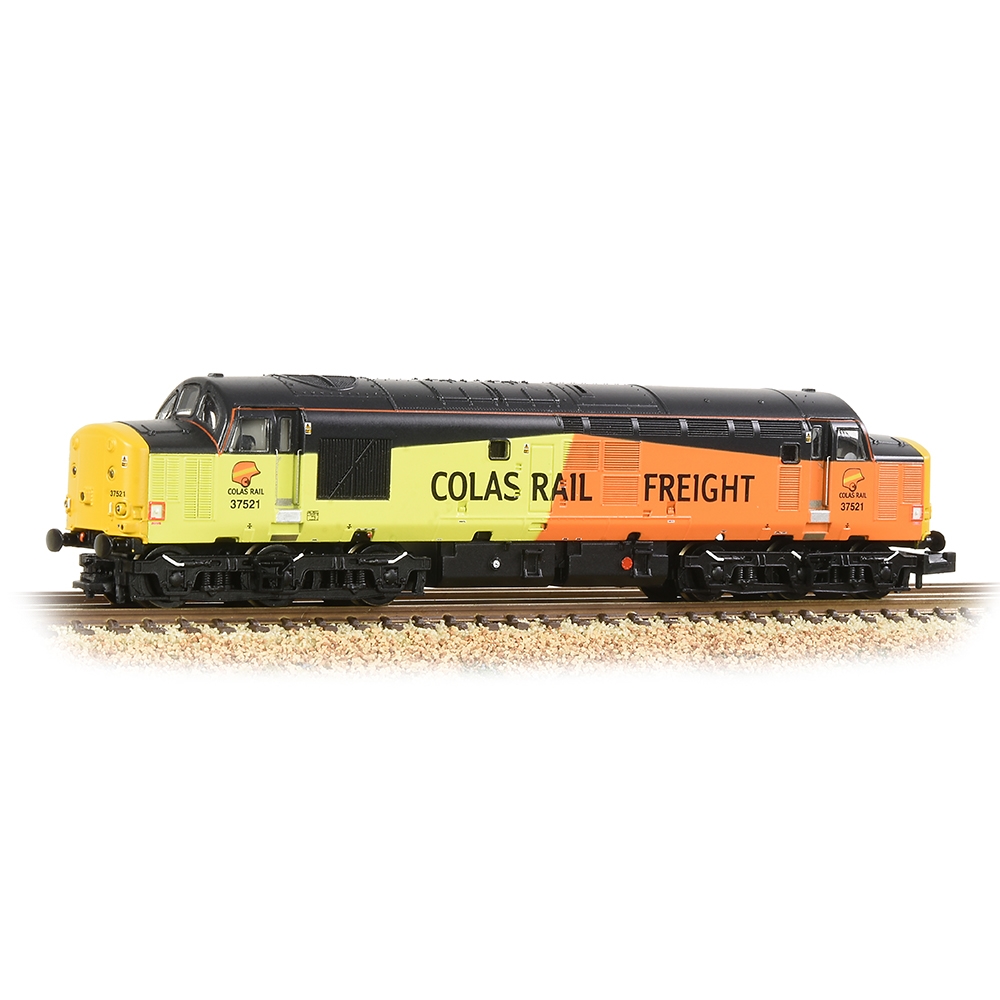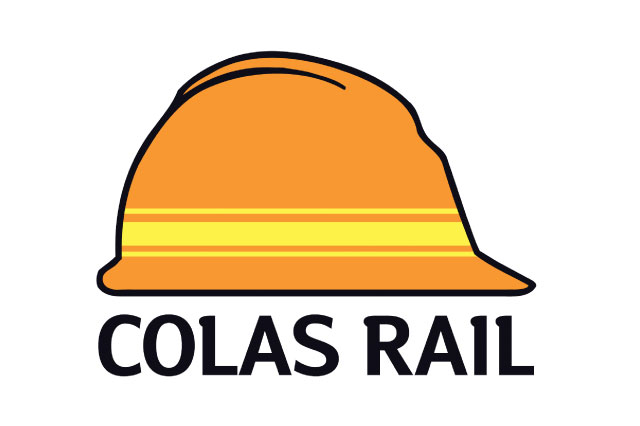Specific Item Information: The British Rail Class 37 is a diesel-electric locomotive. Also known as the English Electric Type 3, the Class was ordered as part of the British Rail modernisation plan. They were numbered in two series, D6600-D6608 and D6700-D6999.
The Class 37 became a familiar sight on many parts of the British Rail network, in particular forming the main motive power for InterCity services in East Anglia and within Scotland. They also performed well on secondary and inter-regional services for many years. The Class 37s are known to some railway enthusiasts as "Tractors", due to the distinctive agricultural sound of the diesel engine of the locomotive.
Despite all members of the build now being over 50 years old, over 60 locomotives are still mainline registered and remain active undertaking a variety of passenger, freight and departmental duties on the national rail network in 2019. Approximately 30 locomotives have been preserved.
In the 1980s the Class 37 locomotives were extensively refurbished - from that point 37/0 refers to the original version. The work took place at British Rail Engineering Limited's Crewe Works except for the 37/3 subclass whose bogies were replaced at various depots.
The Class 37 became a familiar sight on many parts of the British Rail network, in particular forming the main motive power for InterCity services in East Anglia and within Scotland. They also performed well on secondary and inter-regional services for many years. The Class 37s are known to some railway enthusiasts as "Tractors", due to the distinctive agricultural sound of the diesel engine of the locomotive.
Despite all members of the build now being over 50 years old, over 60 locomotives are still mainline registered and remain active undertaking a variety of passenger, freight and departmental duties on the national rail network in 2019. Approximately 30 locomotives have been preserved.
In the 1980s the Class 37 locomotives were extensively refurbished - from that point 37/0 refers to the original version. The work took place at British Rail Engineering Limited's Crewe Works except for the 37/3 subclass whose bogies were replaced at various depots.
Road Name History: Colas Rail is a French civil works company, a subsidiary of the Bouygues Group, specializing in railway construction works. Colas Rail is the result of the merger of Seco Rail and Spie Rail as of January 31, 2008, following the acquisition of Spie Rail by Colas in May 2007.
Colas Rail is also a railway operator, that operates freight trains in France (mainly aggregates and cereals) but also in the UK.
Read more (in French) on Wikipedia.
Colas Rail is also a railway operator, that operates freight trains in France (mainly aggregates and cereals) but also in the UK.
Read more (in French) on Wikipedia.
Brand/Importer Information: Graham Farish is a British brand of N gauge model trains, that belongs to Bachmann Europe.
The company entered the model train business in the early 1950s, focusing on British OO gauge rolling stock, track and accessories.
In the 1970s, it started to produce N gauge models under the GRAFAR label. After the withdrawal of Lima and Minitrix from the UK market in the late 1980s, Graham Farish was the only major supplier of British outline models in N gauge, soon withdrawing from the OO scale market.
In 2001, Graham Farish was purchased by Kader Industries of Hong Kong, and absorbed by its subsidiary Bachmann Industries. Bachmann immediately closed the British manufacturing facility and moved production to China.
Bachmann have since increased the size of the Farish range, by duplicating models introduced to the Bachmann OO range; often, an OO scale Bachmann Branchline model is followed between 6 months to a year later by an N gauge Graham Farish model.
The company entered the model train business in the early 1950s, focusing on British OO gauge rolling stock, track and accessories.
In the 1970s, it started to produce N gauge models under the GRAFAR label. After the withdrawal of Lima and Minitrix from the UK market in the late 1980s, Graham Farish was the only major supplier of British outline models in N gauge, soon withdrawing from the OO scale market.
In 2001, Graham Farish was purchased by Kader Industries of Hong Kong, and absorbed by its subsidiary Bachmann Industries. Bachmann immediately closed the British manufacturing facility and moved production to China.
Bachmann have since increased the size of the Farish range, by duplicating models introduced to the Bachmann OO range; often, an OO scale Bachmann Branchline model is followed between 6 months to a year later by an N gauge Graham Farish model.
Manufacturer Information: Bachmann, a US company founded in 1835, was purchased by Kader Industries in 1987. Kader formed Bachmann Industries Europe in 1989 with their main UK headquarters in Moat Way, Barwell, Leicestershire, UK (former Palitoy location) and the following year launched the Bachmann Branchline range for the British market with the moulds that had previously been used for the Palitoy Mainline and Replica Railways model railway products. From this starting point Bachmann has developed the range further and now produce a large range of models.
In 2001 Bachmann Branchline bought Graham Farish, an N gauge manufacturer, and since then many of their models have been made available in both gauges.
Bachmann Europe portfolio also comprises other model trains brands such as Liliput.
In 2001 Bachmann Branchline bought Graham Farish, an N gauge manufacturer, and since then many of their models have been made available in both gauges.
Bachmann Europe portfolio also comprises other model trains brands such as Liliput.
Item created by: CNW400 on 2022-03-18 13:02:19
If you see errors or missing data in this entry, please feel free to log in and edit it. Anyone with a Gmail account can log in instantly.
If you see errors or missing data in this entry, please feel free to log in and edit it. Anyone with a Gmail account can log in instantly.










